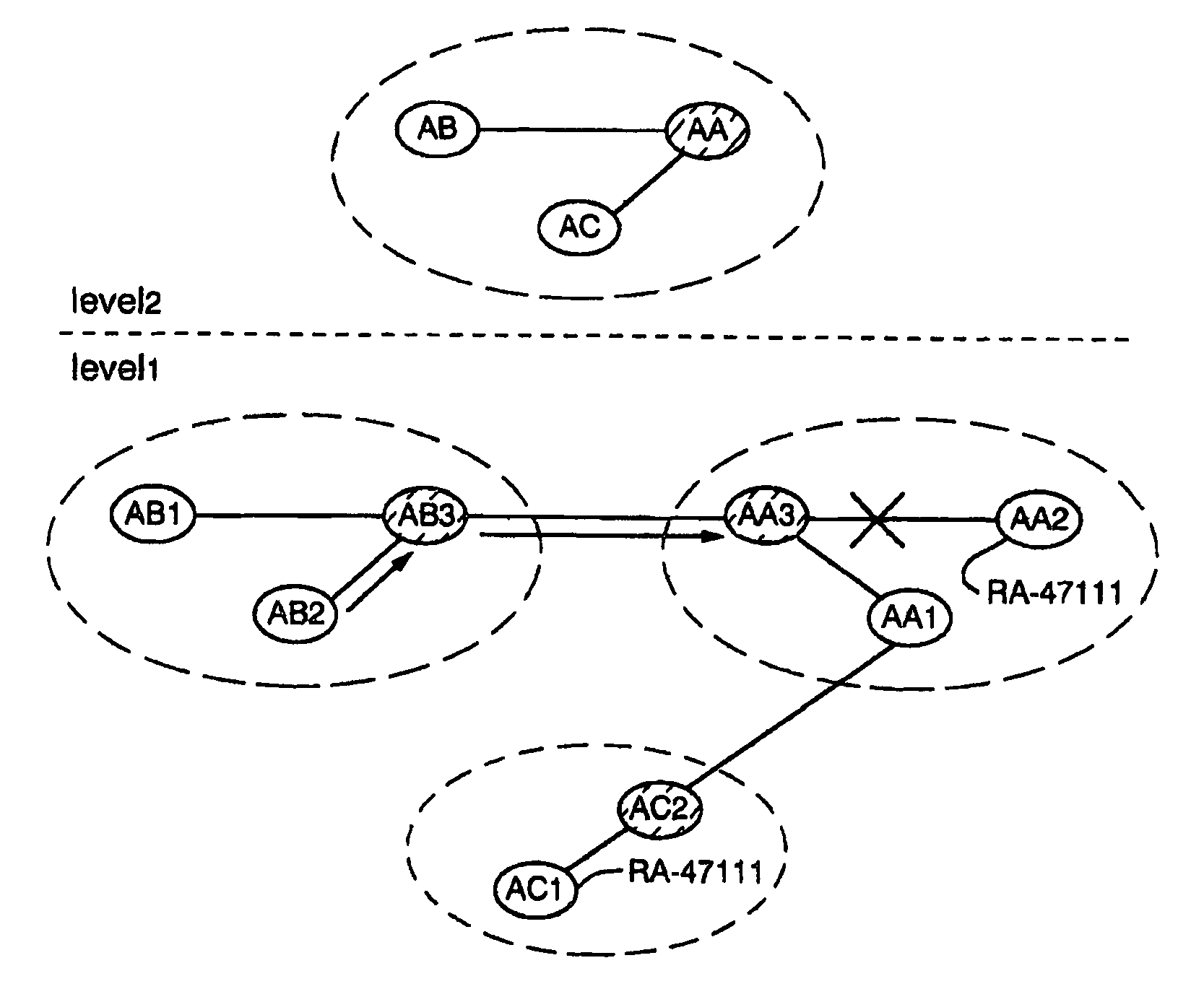Address management in PNNI hierarchical networks
a hierarchical network and address management technology, applied in data switching networks, memory adressing/allocation/relocation, instruments, etc., can solve the problems of ptse no longer considered valid topology information, address being flushed from the network, etc., to reduce the length of time
- Summary
- Abstract
- Description
- Claims
- Application Information
AI Technical Summary
Benefits of technology
Problems solved by technology
Method used
Image
Examples
Embodiment Construction
[0031]FIG. 2 is a schematic block diagram of an embodiment of a network device showing the main elements involved in implementing address management methods embodying the invention. As shown in the figure, the device, such as an ATM switch, comprises a control unit 1, a memory 2, and circuitry 3 which represents the interfaces (I / Fs) and switching fabric which connect the device with its links to neighboring nodes and via which the device communicates with the rest of the network. The control unit 1 controls operation of the device generally, and includes address management apparatus in the form of control logic (not shown separately) which controls the address management functions to be described below. The control logic may be implemented in hardware or software (program code), or a combination thereof, and suitable implementations will be apparent to those skilled in the art from the following description. In particular, the control unit 1 may be implemented by a suitably program...
PUM
 Login to View More
Login to View More Abstract
Description
Claims
Application Information
 Login to View More
Login to View More - R&D
- Intellectual Property
- Life Sciences
- Materials
- Tech Scout
- Unparalleled Data Quality
- Higher Quality Content
- 60% Fewer Hallucinations
Browse by: Latest US Patents, China's latest patents, Technical Efficacy Thesaurus, Application Domain, Technology Topic, Popular Technical Reports.
© 2025 PatSnap. All rights reserved.Legal|Privacy policy|Modern Slavery Act Transparency Statement|Sitemap|About US| Contact US: help@patsnap.com



